By Damali and Nii B. Andrews.
“Ethiopia shall soon stretch out her hands unto God” – Psalm 68:31.
Two things will always stand out in our memory from our first visit to Ethiopia over two decades ago.
The first was the immaculate indigenous wooden furniture that graced the lobby of the Addis Ababa Hilton.
The patina of the wood and leather seats combined with the Christian inscriptions carved on their arm and back rests were just gorgeous.
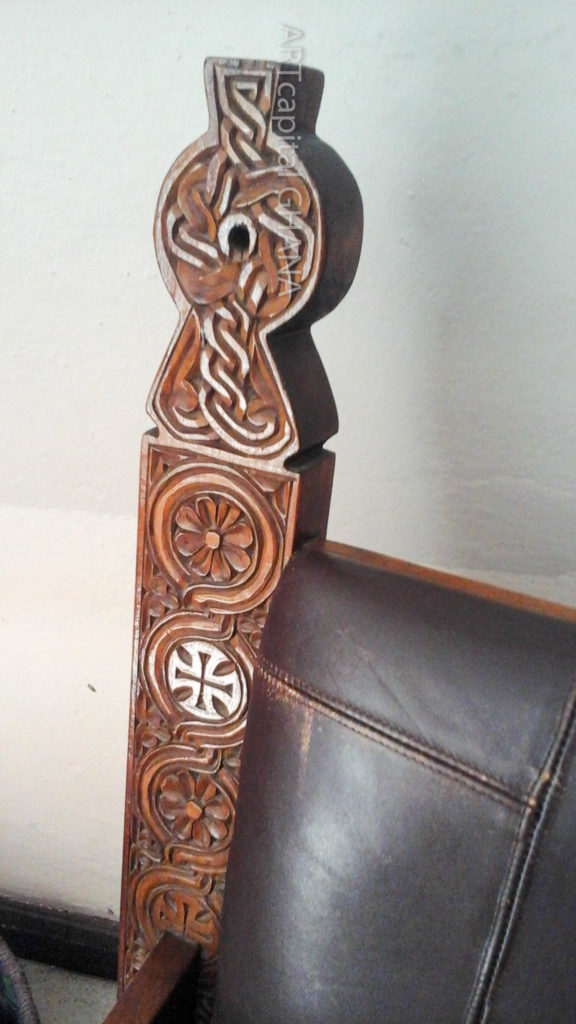
They are a reminder that Christianity arrived in Africa over 1600 years ago.
Should Christianity not then be considered as part of “African tradition”?
Is it not also an “African religion”?
The second was the ubiquitous intricately worked, lace like, metal hand cross – often carried by holy men as they moved about the city in hand woven cotton garments that draped them so elegantly.
Ethiopia stands out as the place with an incomparable prominence of the cross in the life of its people with crosses decorated in an inexhaustible variety of complexity.
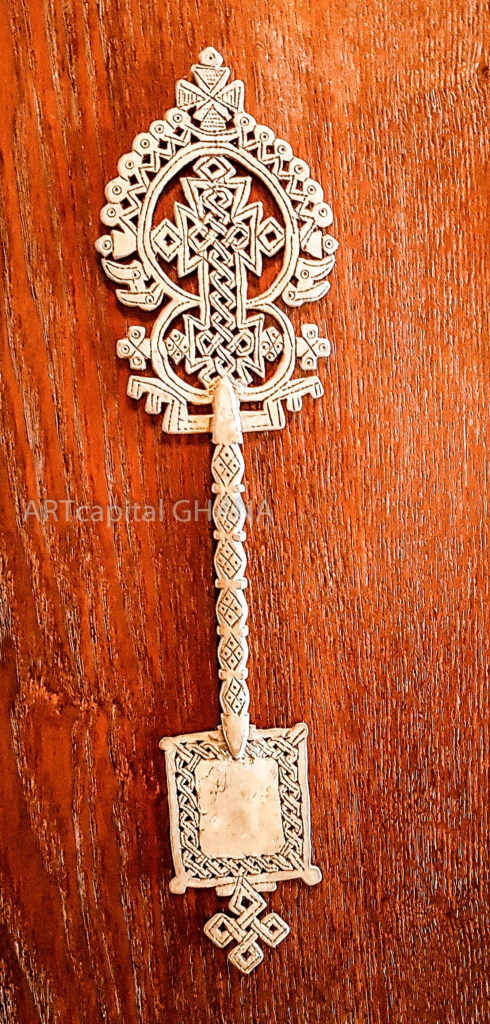
[This cross is aggrandized by its placement under a triumphal arch. It is therefore following an ancient prototype of great age – probably from the 12th to 13th century.]
The visual effect is based on the repetition of self- similar patterns in different sizes and a balanced treatment of matter and void. The effect is lace or textile like.
Did anyone say or think veil? Perhaps the symbolic forms should then lead us to (?unveil) underlying meanings.
In the Ethiopian context, the cross is a medicine, just like holy water.
The scholar Mogas Equba-Giyorgis wrote in “Guide of Truth. Discourse on Faith”, “Cross our power, cross our strength, cross our redemption, cross the health of our soul”.
Mogas had thus put into a prayer the words of St. Paul – “The preaching of the cross is to them that perish foolishness; but unto us that are saved it is the power of God”. (1st Cor. 1:18).
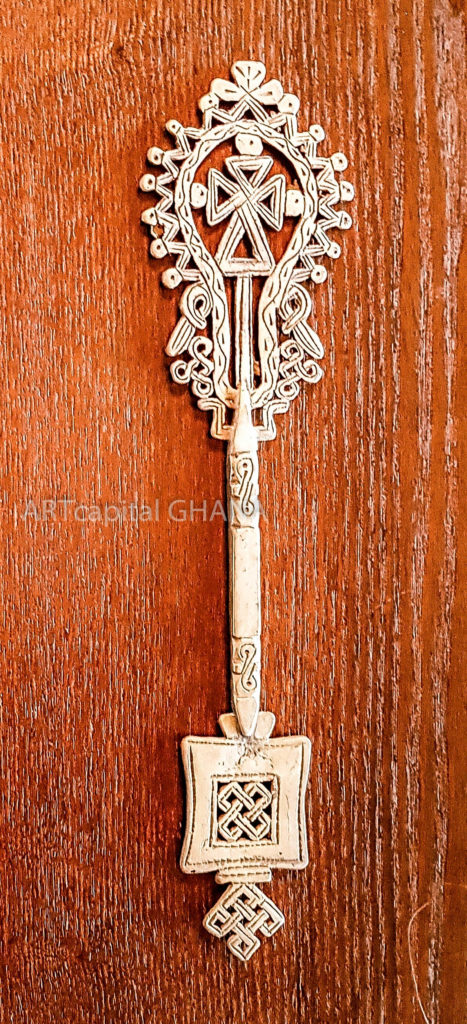
[Another cross under a triumphal arch. There are hints of curved interlacing with inclusion of eyes – a motif that has been transferred from the design of sacred scrolls.]
In Ethiopia, as opposed to the Western Christian perspective, the cross is far more an image of triumph than one of death.
It is omnipresent in the life of Ethiopian Christians as a sign of Christian health.
It serves as the final refuge of believers in moments of physical or spiritual fear; it encompasses both public life and individual destiny marking common space and the individual body.
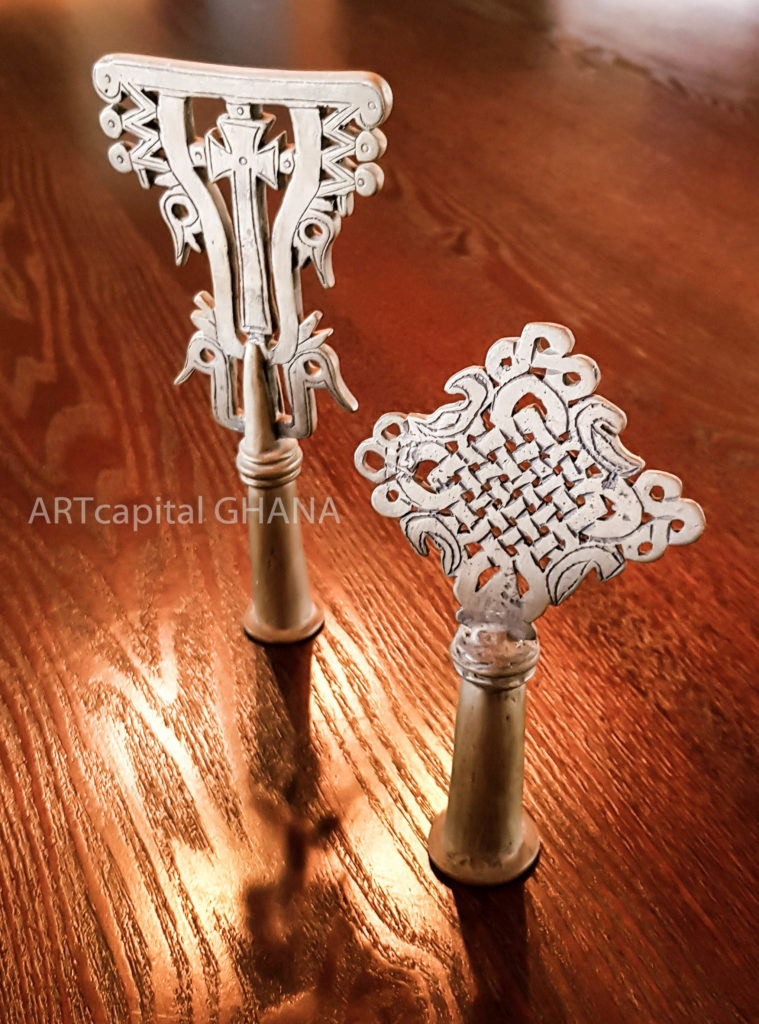
[Are there schematic birds on the larger cross and serpents on the smaller one? This pair serve as processional crosses when placed on a staff]
These ideas are expressed in perhaps their most eloquent form in the prayer called “The Rampart of the Cross”:
“The cross above all things. Cross the hope of the desperate and the sad. The rampart of the cross existed before the creation of the world and will exist forever”.
Such is the lofty and militant conception of the cross in Ethiopia where the Christian traditions hark back to the birth of the religion.
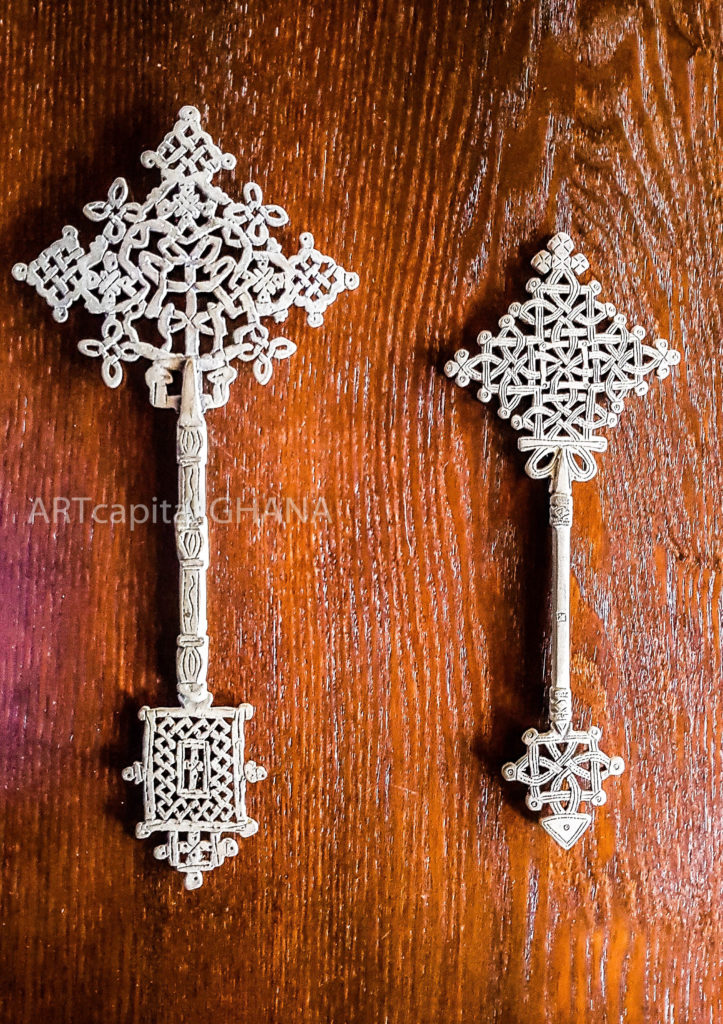
[ lower tablet references the tomb of Adam]
Multiple versions are still fabricated by skilled artisans.
What is striking is the almost total absence of the representation of the Crucifixion – such crosses only became more evident in the 18th century as a result of copying the Western influenced pictorial style.
Up until the 14th century, the ancient form of representation held sway; the cross was placed under a triumphal arch; sometimes the head of a ram was placed at the top of the shafts to represent the Lamb of God……
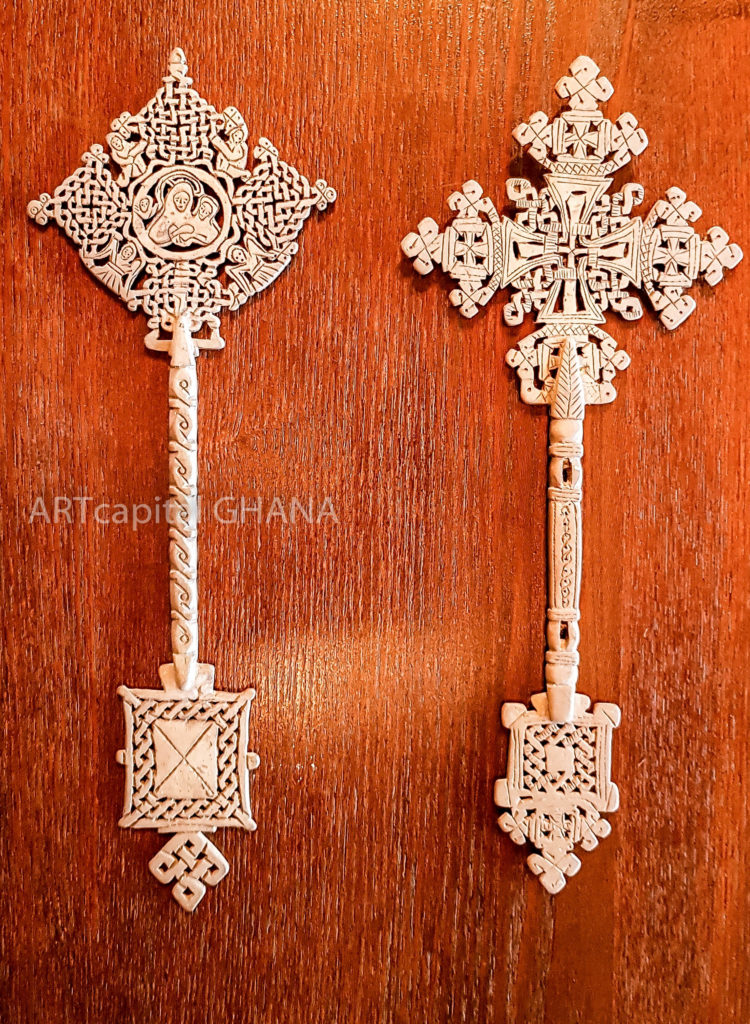
[The lower rectangular panels symbolize the Ark of the Covenant/ Old Testament.]
Later versions of the cross included foliage and birds.
The latter perhaps allude to heralds of the Resurrection; the former, to the Tree of Life in Paradise…..the wood that gives eternal life, is the same as the Tree of Life in Paradise.
But for the Ethiopians, their crosses are made of metal since the material is gathered from numerous places and fused into a single mass. This corresponds to the Redeemer born from a lineage of princes and priests.
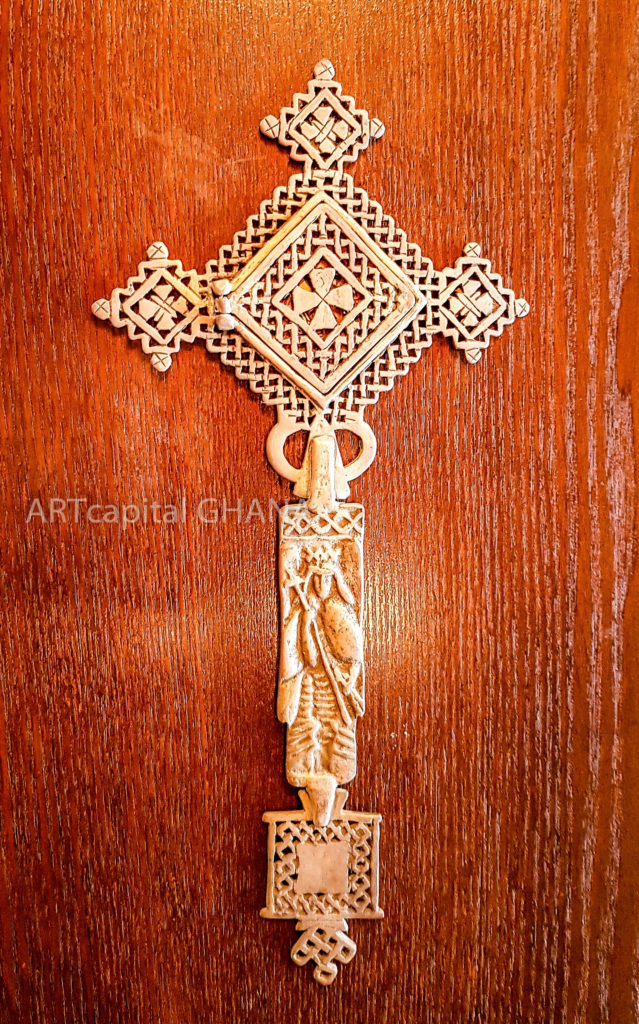
[The central panel opens out to reveal a painting of an angel with a sword – see photo below. Possible brazen serpents at top of shaft?]
We returned home, from that first trip, with a dozen crosses and a modest suite of Ethiopian furniture.
We are grateful that the objects continue to provide ample opportunity to meditate on and internalize their symbolic and devotional aspects; while of course appreciating their aesthetic value.
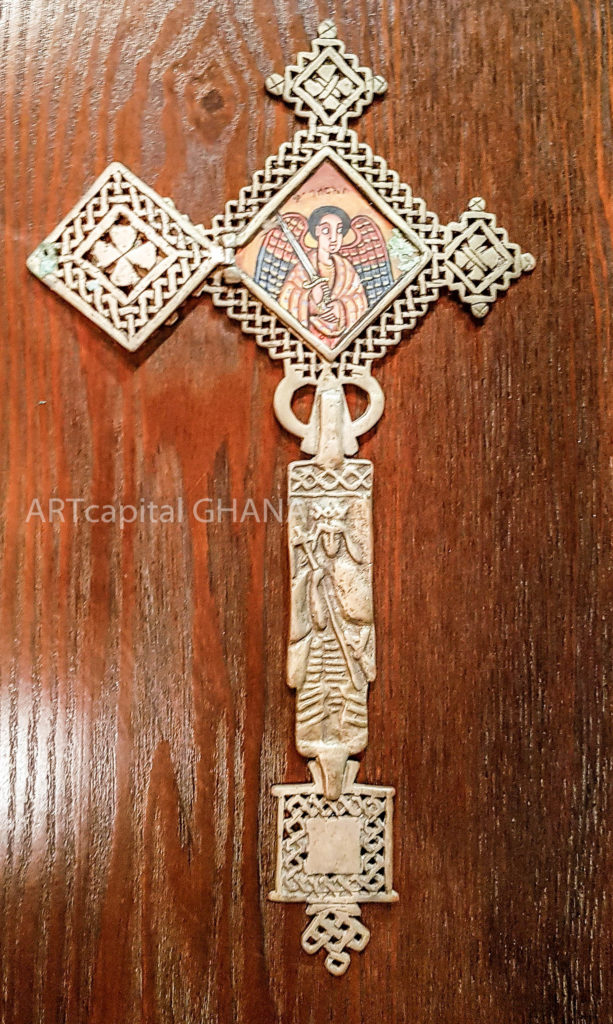
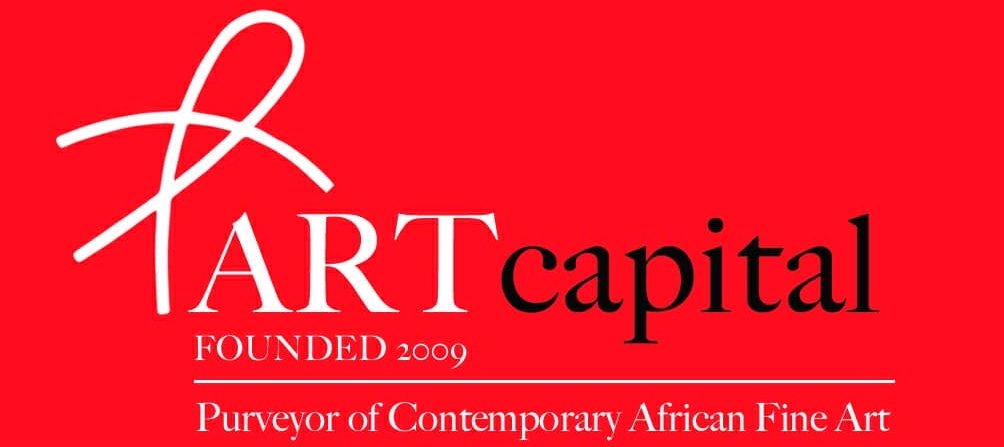
Concerning the last photo;
the script says Saint Gabriel; the picture is of Saint Gabriel.
Please note that, in Ethiopian Orthodoxy, the Virgin Mary is venerated highly. Therefore St Gabriel is also very important for them.
Finally, the cross is an Axum Cross. Therefore the saint at the bottom is likely to be Saint Yared.
Thank you so much AT, for your very useful input. It is deeply appreciated.
Very insightful post.
Another interesting article. The crosses in the collection are quite splendid too.
Again, interesting to know the depiction of the cross in Ethiopia. I really like the piece about it being a symbol of triumph rather than death. One wonders what would have been had the African Unity ideas of old taken hold.